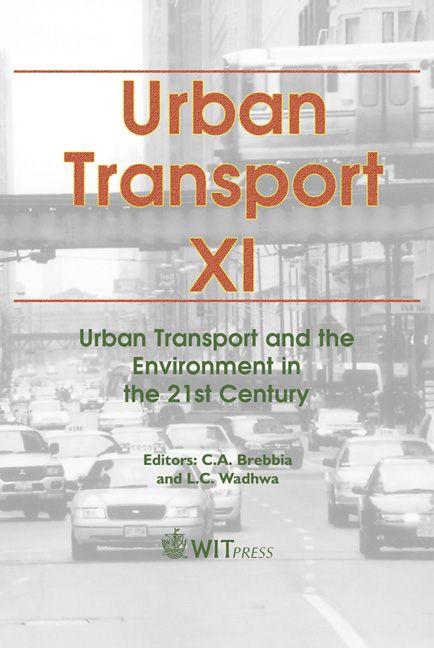Transport Impacts Of The Copenhagen Metro
Price
Free (open access)
Transaction
Volume
77
Pages
10
Published
2005
Size
700 kb
Paper DOI
10.2495/UT050151
Copyright
WIT Press
Author(s)
G. Vuk
Abstract
The Copenhagen Metro is the main improvement made to Denmark’s urban public transport infrastructure in the last decade. The most important argument in favour of a new public transport system in the capital was to increase market share for public transport, thus reducing car traffic and environmental impact and enhancing urban development, especially on the island of Amager, whose only previous link to the city was a bus service. Keywords: metro system, transport impact, panel survey. 1 Introduction 1.1 The Copenhagen Metro In 1992, the Danish Parliament passed the Ørestad Act permitting the construction of a new railway infrastructure in Copenhagen. The government thus endorsed the regeneration of public transport and the reduction of road congestion in the Danish capital. Of the three suggested public transport modes – metro, light rail and tram – the first option was chosen. Metro construction started in 1996 and the first phase was opened on 19th October 2002. Figure 1 shows the metro’s alignment. The 11-km route consists of two metro lines connecting the island of Amager in the south with the city terminus at Nørreport on the island of Sjælland. Metro line 1 (M1) runs to a new town Ørestad in west Amager while metro line 2 (M2) runs to Lergravsparken in east Amager. The two lines meet on the Amager side of the Harbour corridor, just before Knippelsbro Bridge where the line goes underground. The new town Ørestad will expand over the next 20 years to an area of 310 hectare, providing 60,000 jobs, 20,000 education places and 20,000 dwellings. Some larger companies have built new offices in Ørestad: Telia, Copenhagen Energy, Keops and Ferring. The Danish Broadcasting Corporation will transfer
Keywords
metro system, transport impact, panel survey.





